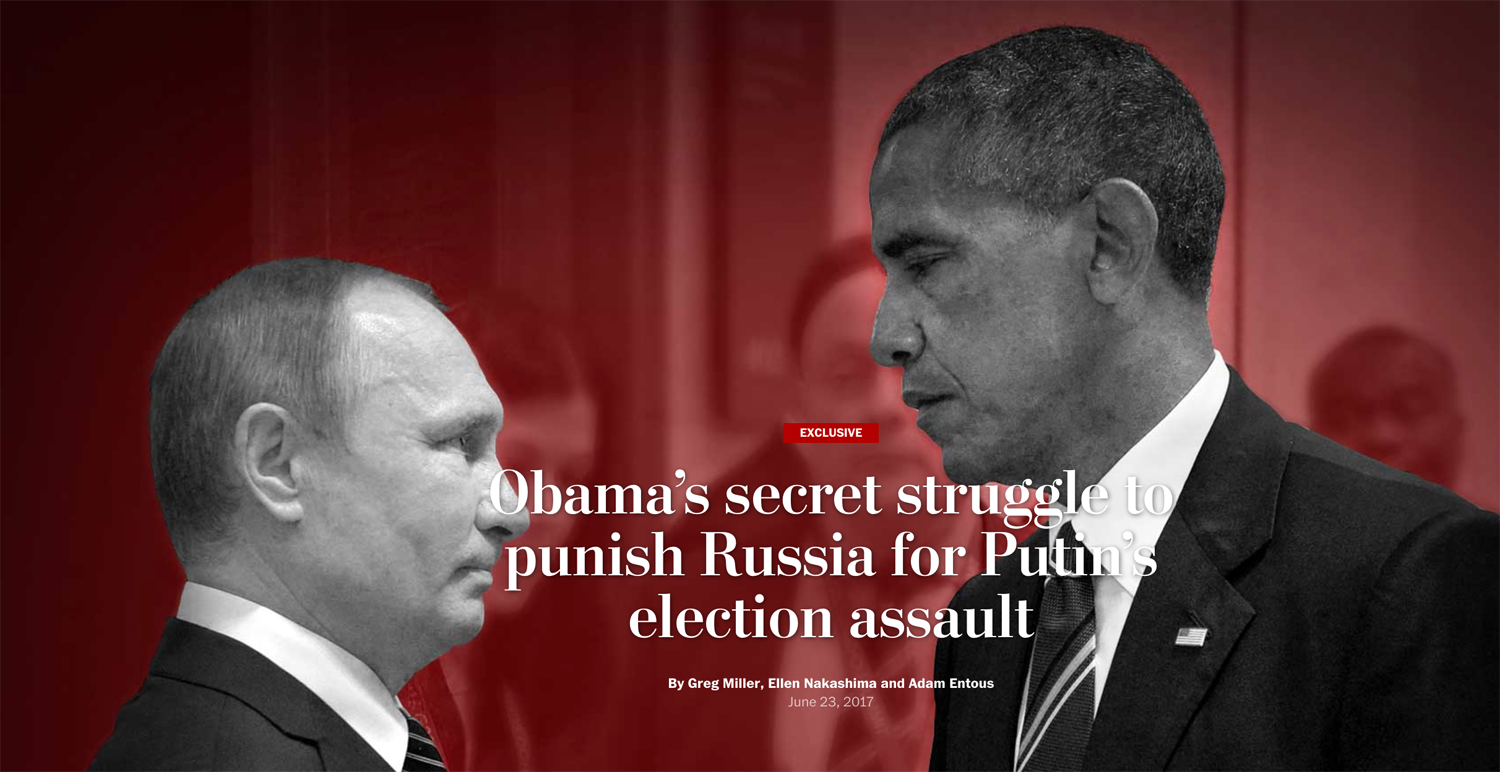The Washington Post may not yet be Americans’ newspaper of record, but after its publication of groundbreaking revelations about Russia’s meddling in the 2016 election Friday, it’s certainly one step closer.
The Post broke the news that the Obama Administration secretly grappled with whether to retaliate against the Russian regime after receiving a top-secret intelligence report last August showing that President Vladimir Putin had a direct hand in trying influence the U.S. presidential election. They also found that Putin wanted to hurt Hillary Clinton’s chances of winning while bolstering Donald Trump’s.
EXCLUSIVE: Inside Obama’s secret struggle to punish Russia for Putin’s attack on American democracy https://t.co/NL03qPunPe
— The Washington Post (@washingtonpost) June 23, 2017
By itself, the news was shocking. But what really stood out about the report was the way in which The Post published it. Using a coordinated storytelling effort that included an interactive timeline, a mini-documentary, a podcast episode and a Facebook Live panel with the journalists who worked on the story, the newspaper showed how major investigative work can be rolled out as a multimedia, multi-platform event.
Interactives
The Post’s website was dominated by a single story with several embeds scattered throughout. One key element of note is the inclusion of interactive explanations for each person included in the story, which readers only have to hover over specific names to view. Besides photos, The Post embedded supporting documents alongside the article in order to corroborate the reporting.
Related Training: Engage Audiences with Interactive Video with Verse: A Digital Tools Tutorial
In addition to the article, the newspaper published a separate interactive graphic piece that takes readers through each revelation in the investigation. Components of the graphic are embedded throughout the written piece, but the interactive lives on a separate landing page and includes a timeline of key events during the 2016 election that are related to hacking incidents or Russia. The new revelations are highlighted in yellow, with the most important points appearing at the top.
Mini-documentary
Near the top of The Post’s web story about the Obama Administration’s fight over Russia is an embedded 10-minute mini-documentary about the investigation and what it reveals. The video features sit-downs with the national security reporters who worked on the project, as well as news clips from the 2016 election, photo illustrations and infographics sprinkled throughout. While it works as a corollary to the project, it also works as a standalone video, featuring many of the investigation’s key points without seeming overly redundant.
Facebook Live
After publishing both the written story and interactive graphic this morning, The Post took to Facebook Live to broadcast a panel with the reporters who worked on it. The reporters began by explaining the details and nuance of the article, later answering questions about the specifics of how and why Putin meddled in the U.S. election, and how Obama responded. The broadcast amassed nearly 100,000 views 2,000 shares as of this writing.
Podcast
The Post stretched its groundbreaking investigation further on Friday with a bonus episode of its politics podcast “Can He Do That?” a popular show that focuses on the ways Trump’s historic presidency could change the office and how it’s perceived around the world. The episode, which was hosted by Allison Michaels, delves into the details of the investigation, as well as the political questions raised by Putin’s endeavors to meddle in the U.S. election. As of publication, the episode had more than 2,500 listens and seven likes on SoundCloud.







